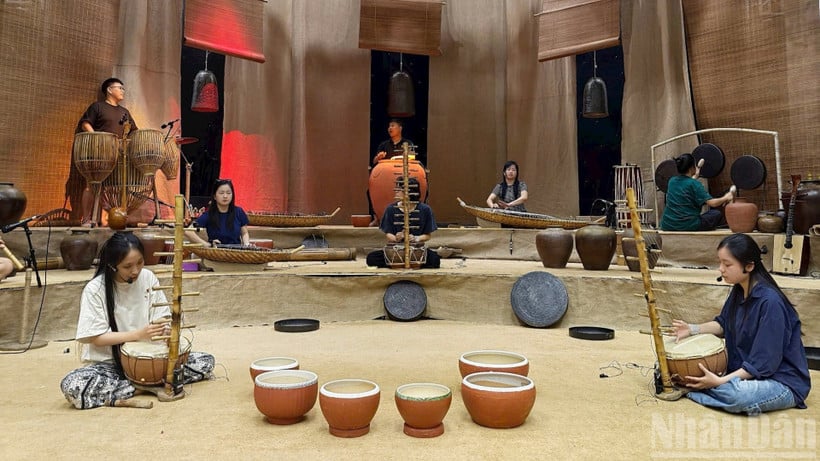
In the current musical context, when digital technology, stage effects and international trends increasingly dominate public tastes, some young Vietnamese artists proactively seek out tradition as a source of vibrant inspiration, from which to accompany, dialogue and constantly innovate.
When tradition becomes material
For over 12 years, the Dan Do group of artists has been persistently developing a new musical instrument system made from ceramics and bamboo combined with experimental music, performance and contemporary art elements. From rustic materials, they have created a unique sound language. “We chose bamboo and clay because they are materials closely associated with the lives and cultures of many Southeast Asian communities. Exploiting these traditional materials has brought the group rich inspiration, and at the same time opened up many opportunities to explore cultural depth,” shared artist Nguyen Duc Minh, in charge of art and music of Dan Do.
In early 2025, Dan Do launched a contemporary art project called GOm Show, a bold move in choosing ceramics as the starting point for a new sound journey. Unlike conventional performances, GOm Show does not tell a story in a descriptive way but opens up a world of wordless music, where emotions are guided through the sounds of jar drums, zithers, earthenware bells, rotating ceramics...
“Pottery is earth, water, fire. GOm does not recount but awakens. Pottery resonates like a part of the Vietnamese people’s memory, telling stories with sound, not words,” Nguyen Duc Minh emphasized.
Making musical instruments from ceramic is a challenging choice: ceramic is fragile, the sound is unstable, and there is no repeatability. But it is this uncertainty that creates the unique character of each performance. In GOm Show, each artist will explore the sound, listen to the vibration, the resonance, the depth to find the most suitable way of expression.
“We don’t compose music for artists to play. Instead, we create an experimental environment where each person can find their own artistic voice. Each performance is a creative process, there are no copies,” said artist Dinh Anh Tuan, founding member of the Dan Do group.
What makes GOm special is not only its sound, but also its creative organizational model because it is a collective project, bringing together many generations of artists from the founder to young faces.
According to Quynh Mai, one of the young artists of Dan Do, at first ceramic musical instruments were completely unfamiliar, and the working method was also different from the art models she had approached. But it was the sincerity and dedication of the artists before her that made her believe that she was on the right track.
Quynh Mai does not hide the difficulties in the training process. Ceramic instruments are fragile, requiring meticulousness and perseverance. Each practice session is not only about practicing techniques but also a journey of learning, creating and listening to oneself. “We do not just learn to perform. Each person must find their own voice in the sound of ceramics. There is pressure but also a lot of joy,” she shared.
GOm Show is not only a music project but also a community-based creative model. Production director Nguyen Phuong Lai said: “We selected dozens of candidates from many provinces and cities, from those with musical expertise to those who are simply passionate. After many rounds of testing, the group currently has 10 members, each taking on a separate role in the overall creative structure.”
GOm Show will debut at the Hanoi Opera House on June 28 and 29. After that, the group plans to hold regular performances at an art space in the center of Hanoi, targeting both domestic and international audiences. In addition to music, the group is also nurturing a new project using wood materials combined with dynamic stages, body performances and lights, continuing the journey of exploiting and spreading traditional values.
Need to be preserved and continued
Another typical representative of the creative journey from traditional culture is young artist Ly Mi Cuong. Born in Lung Phin commune, Dong Van district, Ha Giang province, Cuong grew up with the sounds of panpipes, flutes and H'Mong folk songs. At the age of 15, he went to Hanoi alone to study music and passed the entrance exam to the National Academy of Music. From there, Cuong began his journey to bring traditional music to big stages. "I don't want traditional music to exist only in museums or festivals. I want it to be present on modern stages, so that young people can feel close and proud," Cuong shared.
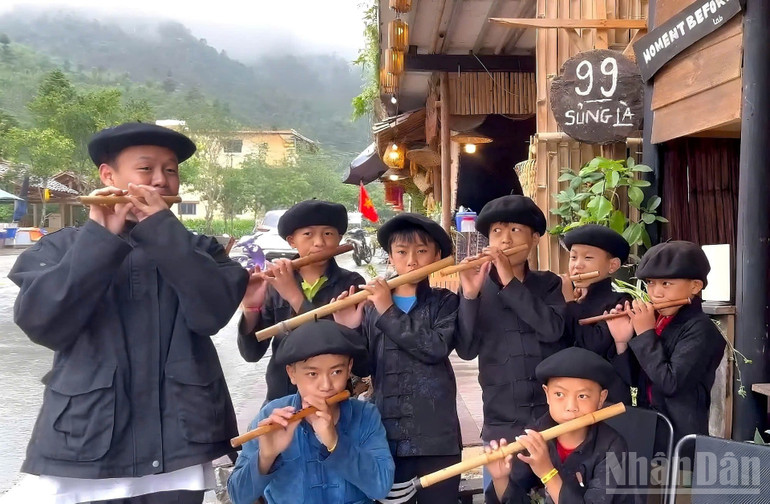
In the Thanh Canh 2023 project, Mi Cuong collaborated with artist Bao Trung (who practices the art of creating sound with voice - beatbox), and music director Nguyen Quoc Hoang Anh, to create a multimedia performance space where the sound of the H'Mong flute blends with the beatbox rhythm. "When Cuong plays the flute, I create the background sound with my voice. It feels like a dialogue, without the need for words. Sound becomes language," Bao Trung confided.
Not only performing, Ly Mi Cuong also actively inspires the young generation in the highlands; regularly organizes meetings and shares with students and teenagers in Ha Giang, encouraging them to get acquainted with traditional musical instruments and be proud of their ethnic cultural identity. Cuong is also a community connector, founder and manager of H'Mong Culture, a H'Mong student community in Hanoi with the meaningful name "H'Mong Culture". The group aims to preserve identity, practice together and spread traditional values through music, performances and cultural activities.
The personal project “Not Si” that Cuong is currently building is an initiative to educate ethnic arts for Hmong youth and teenagers. Cuong coordinates with local cultural officials to organize classes, produce materials, and support children to become familiar with traditional musical instruments. Many children know how to play the flute and the mouth harp, showing a natural love for ethnic music.
“In the context of globalization, it is very admirable that a young Hmong person still cares about his ethnic cultural heritage. Cuong is not only talented but also has a heart for his homeland,” commented artist Nguyen Quoc Hoang Anh.
Journeys like Ly Mi Cuong’s show that tradition is not only a memory that needs to be preserved, but also a living material for young people to explore and spread. Through projects that combine tradition and contemporary, the young generation of artists is contributing to renewing heritage with creative approaches, bearing a strong personal mark.
Source: https://nhandan.vn/doi-thoai-voi-truyen-thong-post890139.html








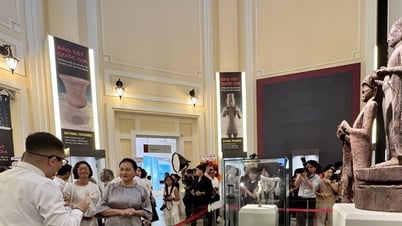




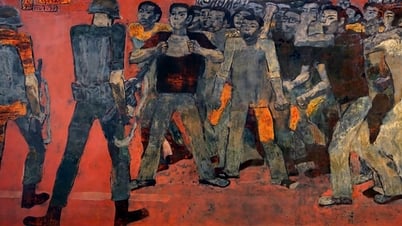
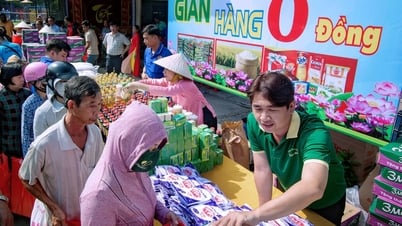

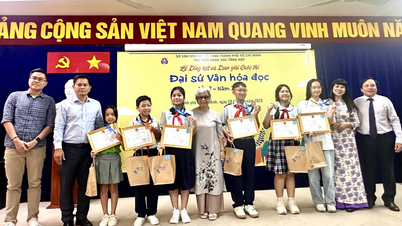






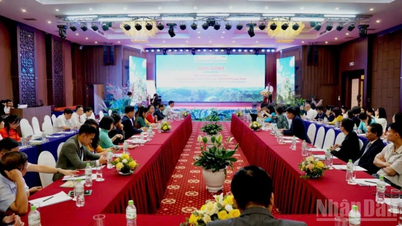


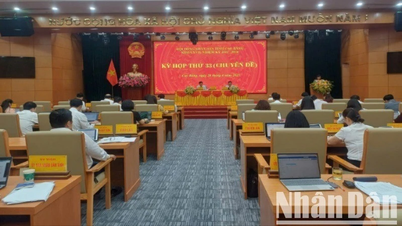


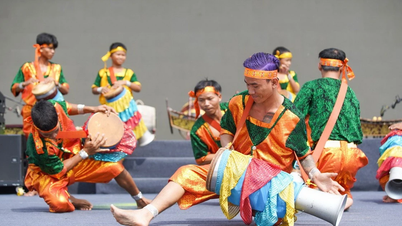


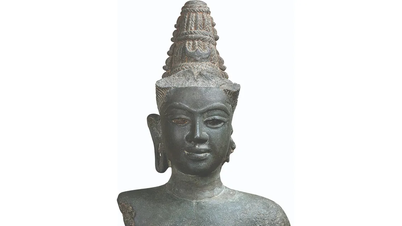
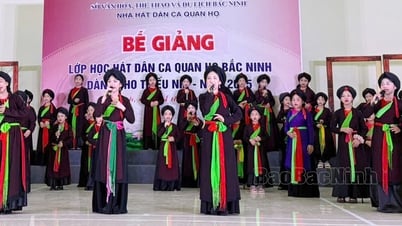

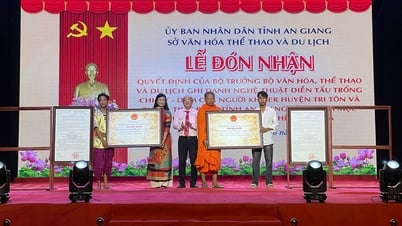



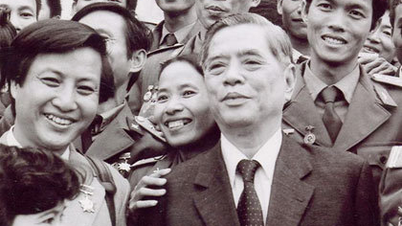

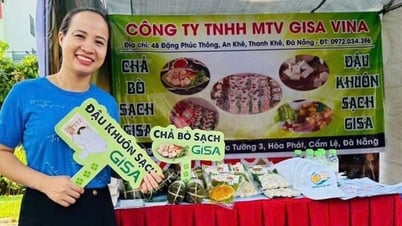

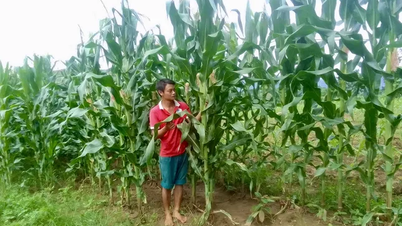


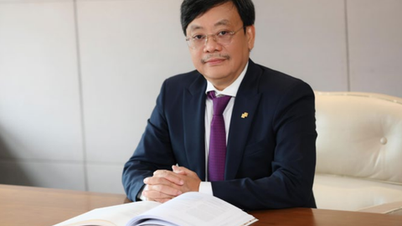





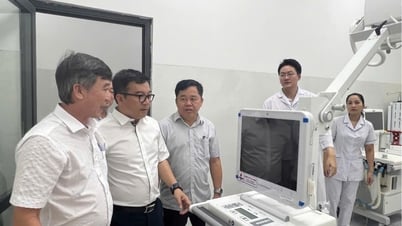




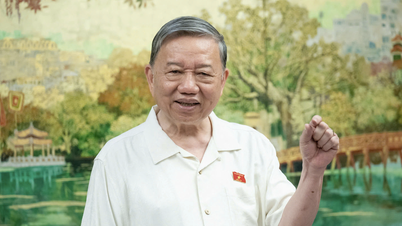






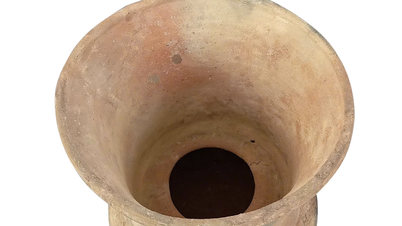
![[Infographic] Circular guiding the functions, tasks and powers of the provincial Department of Culture, Sports and Tourism and the commune-level Department of Culture and Social Affairs](https://vphoto.vietnam.vn/thumb/402x226/vietnam/resource/IMAGE/2025/6/29/877f24989bb946358f33a80e4a4f4ef5)

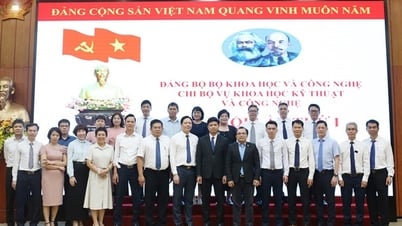









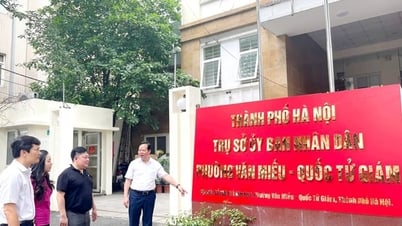
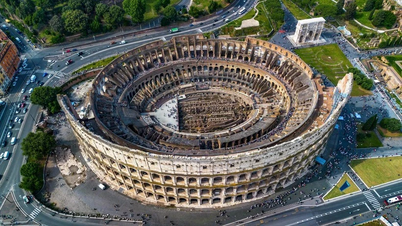

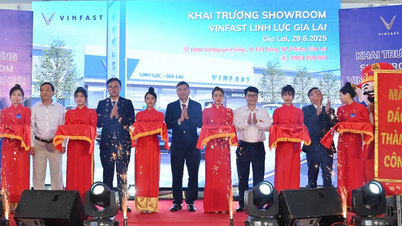
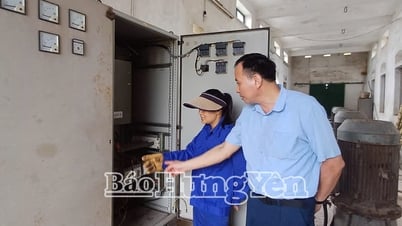













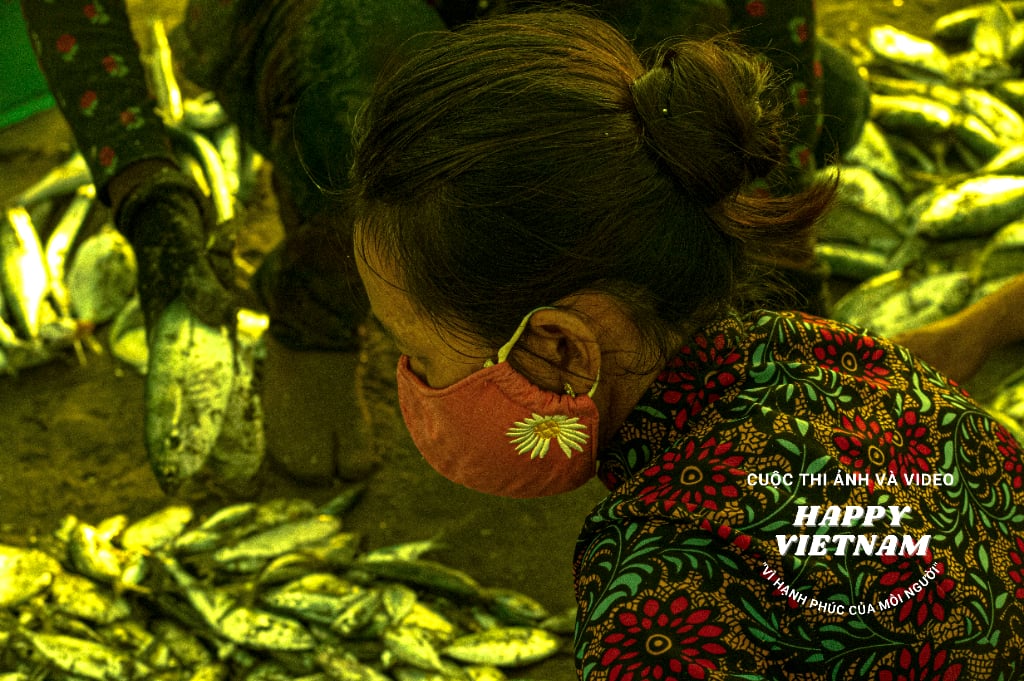
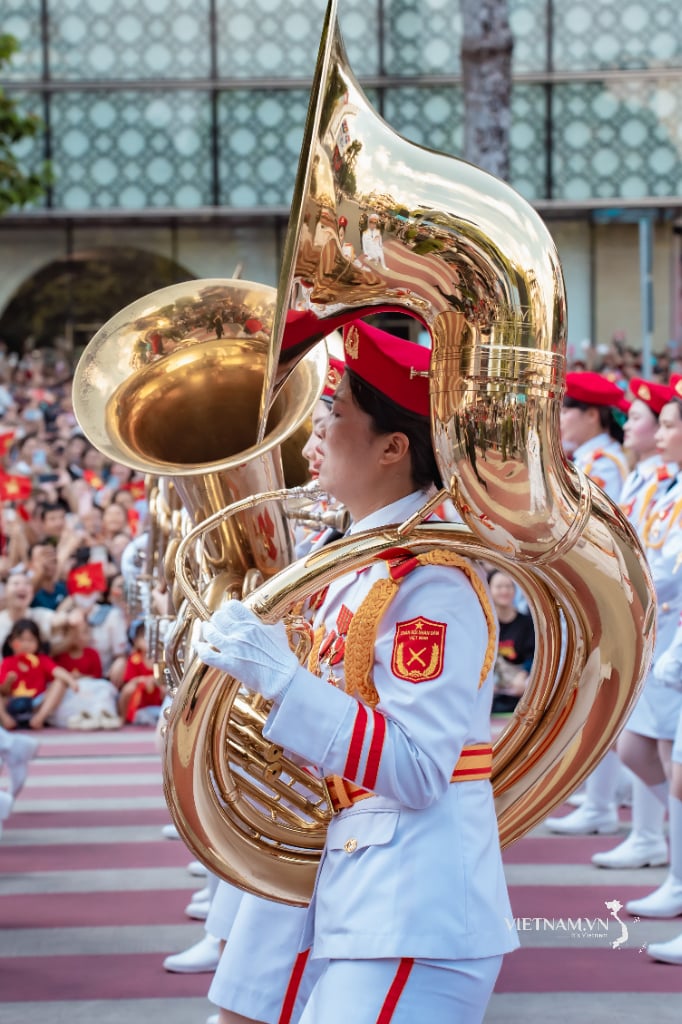

Comment (0)